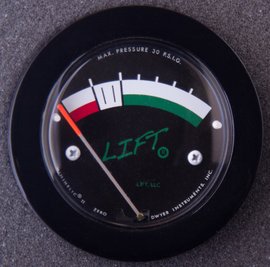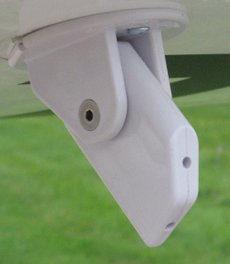LIFT MANAGEMENT, LLC
SAFETY ALOFT WITH
LIFT MONITOR ANGLE OF ATTACK INSTRUMENTATION
Calibrate your Lift Monitor in as few as one or two flights based on your comfort level in slow flight. As familiarity with your aircraft improves, adjust the probe slightly to confidently get the most out of your aircraft in critical attitudes.
Ease transition training for pilots new to your airplane by choosing a conservative calibration. Users quickly discover the ability to land slower, use less runway, and gain confidence making turns in the traffic pattern.
(Download)
(Download)
Double-click here to add your own text.
INTUITIVE DISPLAY
INSTANTANEOUS TREND INFORMATION
SIMPLE - DURABLE
EASILY ADJUSTED
WING PROBE
MONITOR LIFT UNDER ALL FLIGHT CONDITIONS REGARDLESS OF DENSITY ALTITUDE, AIRSPEED, OR AIRCRAFT WEIGHT
BASE TO FINAL OVERSHOOT
MOUNTAIN FLYING
STEEP TURNS FOR A PHOTO SHOOT
SHORT FIELD LANDING OVER
AN OBSTACLE
MAXIMUM PERFORMANCE TAKEOFF
COMPLETELY INDEPENDENT
OF OTHER AIRCRAFT SYSTEMS
MOST AFFORDABLE ANGLE OF ATTACK SYSTEM
FAA Approved for All General Aviation Aircraft
(Minor Modification w/ Log Book Entry)
All angle of attack instruments, including the LIFT MONITOR, sense the aircraft's ability to sustain lift regardless of airspeed, pitch angle, G-force acceleration, gross weight, temperature, or barometric pressure. However in addition, the Lift Monitor from Lift Management, LLC is specifically designed as an affordable tool for developing pilot skill and confidence in handling the aircraft you are flying today as opposed to the one you were trained in or recently sold. The intuitive broad spectrum analog display clearly shows lift currently experienced by the aircraft as well as subtle trends to which you can instantly respond.
Calibrate the Lift Monitor based on your own level of comfort with lift available in slow flight. As you gain familiarity and confidence flying with reference to the Lift Monitor, explore your aircraft's response to lower levels of indicated lift, as with slower approach speeds and steeper bank angles. The wing probe can then be easily adjusted in minutes to reflect a tighter margin of available lift at critical angles of attack appropriate to your increasing familiarity with the aircraft's performance capabilities. Tightening the mount screw engages star lockwashers between the ABS probe and mount ears to assure a solid grip.
By monitoring lift, the pilot can develop the ability to land slower with safety, permitting less wear on tires and brakes. Similarly the demands of short field and high density altitude take-offs can be monitored to ensure safe operation within the limits of your aircraft. The Lift Monitor greatly enhances safety during your turn to final approach with a tail wind on base leg and when maneuvering during photo flights as well as in unusual attitudes.
Transition training for a future buyer of your aircraft also becomes far safer with the Lift Monitor. A demonstration flight, including an assessment by the buyer of his comfort level at the current calibration, will indicate whether a five-minute recalibration to a more conservative setting is appropriate in order to provide adequate safety while the buyer's "seat of the pants" undergoes adjustment. The low cost of the Lift Monitor and simplicity of installation leave little excuse for not availing yourself of the safety and performance afforded by an AOA system. And the Lift Monitor is FAA approved for installation on all GA aircraft, not just experimentals. Working completely independently of all other aircraft systems, installation requires only a log book entry on the part of your mechanic.

